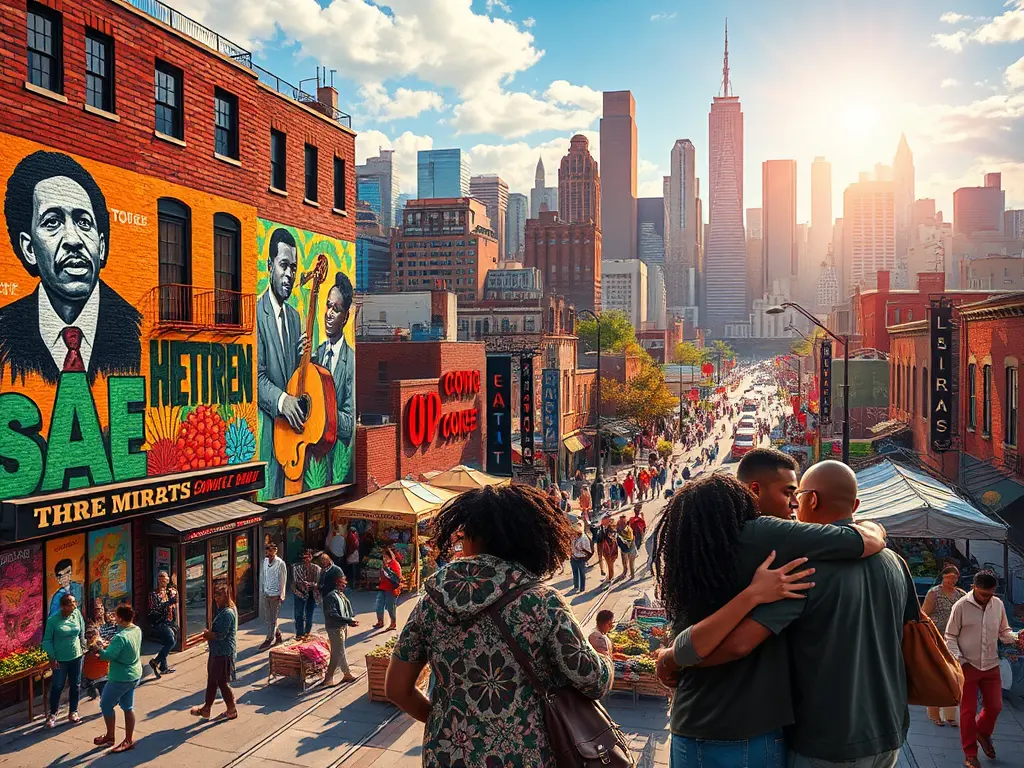
The American Dream: Understanding Its Impact on American History
American dream and the Great Migration refers to a significant movement that altered the social fabric of America. Over six million African Americans moved from the rural South to urban areas in the North, Midwest, and West between 1916 and 1970. The journey was not merely a physical relocation but an escape from oppressive conditions, fueling the struggle for civil rights and cultural identity. This guide delves into the complexities of the Great Migration, providing essential facts and insights into its causes, consequences, and cultural impact. Understanding this historical moment is invaluable for grasping contemporary issues regarding race, migration, and social justice. So, what led to this transformative period, and what legacies did it leave behind? Join us as we explore the ins and outs of the Great Migration.
What is the Great Migration?
The Great Migration marks a pivotal chapter in American history, characterized by the movement of over six million African Americans, primarily from the Southern states, to urban centers in the North and West.
This migration was fueled by a confluence of economic, social, and political factors driving individuals and families to seek better opportunities.
During this period, the Southern states were synonymous with oppression and racial violence, compelling many to escape their circumstances in search of a brighter future.
When Did the Great Migration Occur?
The Great Migration can be divided into two distinct waves.
The first wave occurred between 1916 and 1940, while the second wave extended from 1941 to 1970.
Each wave was marked by different factors influencing the movement, as World Wars I and II created labor shortages in various industries, drawing migrants to urban centers.
Why Did the Great Migration Happen?
Several factors prompted the Great Migration, significantly shaping the lives of those who participated in it.
At the forefront was the quest for better economic prospects.
Many African Americans sought jobs in booming Northern factories, benefitting from wartime labor demands.
Additionally, they aimed to escape the horrors of racial violence and discrimination such as lynching, Jim Crow laws, and poverty that plagued the South.
This yearning for a better quality of life fueled a mass exodus that would forever imprint the American landscape.
Economic Factors Driving the Migration
Job opportunities emerged as a primary motivator for tens of thousands of African Americans seeking a better life.
The Northern economy was flourishing, especially during the world wars, leading to labor shortages in various manufacturing sectors.
As a result, many were employed in factories producing war materials, automobiles, and other essential goods.
According to statistics, between 1916 and 1940, Chicago’s African American population grew from 44,000 to 233,000, demonstrating the economic pull of Northern cities.
Racial Violence as a Catalyst
The pervasive racism, oppression, and violence in the South drove many to seek refuge in the North.
Fleeing from instances of lynching, workplace violence, and deeply ingrained social segregation, these individuals sought safety and dignity.
In cities like Chicago and Detroit, many found an environment less hostile than what they had left behind, contributing to the further influx of Southern migrants.
Cultural Impact of the Great Migration
The cultural ramifications of the Great Migration were profound, leading to movements like the Harlem Renaissance.
This period witnessed an explosion of creativity, with African American artists, musicians, and writers flourishing.
Figures such as Langston Hughes and Zora Neale Hurston emerged during this time, depicting the lived experiences of African Americans.
Jazz, blues, and gospel music also found new lives in Northern cities, showcasing the remarkable resilience and creativity of African Americans.
As cultural exchanges flourished, Southern traditions merged with urban influences, creating new forms of art and social expression.
Key Cities of Migration
Throughout the Great Migration, certain cities became hubs for the new arrivals.
Major destinations included Chicago, Detroit, New York City, Philadelphia, and Los Angeles.
Each city had its population dynamics, career opportunities, and cultural landscapes, which thoroughly shaped the experiences of those migrating there.
Modes of Travel During the Migration
Traveling by train was the most common means for migrants seeking a new life.
Affordability allowed families to escape the harsh constraints of the South, and railroads became the arteries of this movement.
Long journeys were often fraught with uncertainty, but the allure of opportunity kept hope alive.
As historian Isabel Wilkerson noted, “The Great Migration was one of the largest movements of people in the history of the United States.”
Impact on Family Structures
The Great Migration often resulted in family separations.
Many individuals migrated first, establishing themselves in cities before sending for family members.
This led to shifts in family structures and dynamics as individuals faced the challenge of creating a new life away from their roots.
Impact on Northern Cities
Urban landscapes transformed with the influx of African American migrants.
Northern cities experienced demographic shifts, as neighborhoods expanded, leading to both strife and growth.
The rich cultural blend reshaped cities, and the emergence of thriving African American communities echoed the blending of Southern customs with Northern life.
Labor Rights and the Great Migration
The Great Migration laid the foundation for subsequent labor rights movements.
A growing number of African Americans began to form labor unions and fight for fair wages and better working conditions.
Their resilience and collective action significantly contributed to advancements in labor rights across various sectors.
The Legacy of the Great Migration
Today, the descendants of those who migrated during the Great Migration continue to shape America’s landscape.
They play vital roles in contributing to culture, politics, and community development.
The achievements and struggles of earlier generations underscore the importance of remembering this journey and its relevance to current issues such as migration, race, and social justice.
Modern Day Impact and Continuing Relevance
Lessons from the Great Migration resonate today, as contemporary society grapples with similar questions surrounding migration and race.
Current generations find themselves engaged in discussions about immigration policies, racial discrimination, and economic disparity in a way that directly parallels past experiences.
Understanding the Great Migration is essential for navigating these complex issues and ensuring equity in society remains a priority.
Conclusion
The Great Migration was more than a mass movement of people; it was a testament to the enduring spirit of resilience in the face of adversity.
This period forged essential cultural identities and laid the groundwork for civil rights, shaping society as we know it today.
By acknowledging this pivotal moment, we also recognize the significance of fighting for justice and understanding its historical implications.
As we learn from the past, we must continue to advocate for progress and unity in contemporary America.
FAQ
What caused the Great Migration?
The Great Migration was primarily caused by the search for better economic opportunities, racial violence, and the quest for improved living conditions.
Many African Americans sought to escape the oppressive environment of the Southern states.
When did the Great Migration take place?
The Great Migration unfolded in two waves, the first occurring from 1916 to 1940 and the second from 1941 to 1970.
Each wave was influenced by different socio-economic factors, including wartime labor demands.
Which cities were major destinations for migrants?
Major cities that served as destinations during the Great Migration include Chicago, Detroit, New York City, Philadelphia, and Los Angeles.
These urban centers provided various job opportunities and community support for migrants.
What was the cultural impact of the Great Migration?
The Great Migration led to significant cultural developments, including the Harlem Renaissance, which celebrated African American arts and literature.
Music genres such as jazz and blues gained popularity, influenced by Southern traditions.
How is the Great Migration relevant today?
Understanding the Great Migration is essential considering ongoing discussions about race, migration, and social justice.
The lessons taught by this period continue to be relevant as society grapples with similar challenges and disparities.
We invite readers to share your thoughts, experiences, or questions about the Great Migration in the comments section below.
Your engagement helps build a shared understanding of this significant history!





